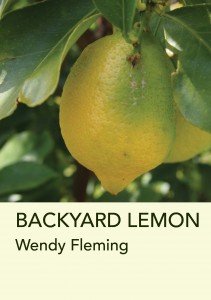Linda Weste reviews “1953” by Geoff Page
by Geoff Page
UQP
ISBN 9780702249525
Reviewed by LINDA WESTE
‘Innovative’: the characteristic imputed to a recent prize-winning verse novel [1] that left prose novel competitors on the short list, prompts one to ask: what determines innovation in a form whose conventions are not widely understood?
Geoff Page’s 1953 is a notable exemplar of temporal innovation in the contemporary verse novel. In its unique arrangement, this collection of poems about life in a small town called Eurandangee rejects the conventional linear unfolding of narrative events in a chronological and causal sequence. Each poem presents a different character in a different location within the storyworld, and each of these characters is participating in events that are taking place at the same time, half past two on Tuesday 17th February 1953.
Page is circumspect as to whether 1953 actually is a verse novel because it breaks with temporal conventions of the verse novel form: “In anything that’s got the word ‘novel’ attached to it, you’d expect forward narrative momentum,” he contends, “but with 1953 you get this diverging off in different directions, all these separate stories that are connected” (Interview). To assist understanding of narrative arrangement in 1953, Page uses a metaphor of yam roots to convey “a whole lot of horizontal stories that are interconnected” (Interview). This spatial metaphor may over-simplify the temporal dynamics of the narrative, and in particular, understanding of its continuity. The poems’ typography and consecutive page layout means that the narrative sequence comprises “parallel phases” (Ireland 107) of co-occurrent events. That is, each new poem is “placed after a given sequence, though on the level of events, the reader is meant to assume [that the present phase of events] occurs parallel with that sequence” (107).
While writing 1953 Page had a number of templates in mind, including Our Town, Dubliners, The Spoon River Anthology and even Under Milkwood, “a number of different sorts of works whose pre-existence enabled (him) to think of doing a local contemporary version of life in a small town”, even though, he maintains, “my idea is a bit different” (Interview).
Indeed, temporal parallels contribute an important difference in 1953: since the destinies of most characters diverge rather than converge, the narrative arrangement serves to thematise small town isolation. The pejorative use of “small town” to convey a place and people limited in outlook and in opportunities, however disparaging, conveys a kernel of reality for each of the forty or so characters. Their particular circumstances may vary, yet each character has a sense of being constrained.
Page brings attention to this limitation, to show his characters in a difficult situation, experiencing a “sense of stasis or flight.” He explains: “A lot of the characters would like to flee. Some characters are locked in a stasis and don’t know how to flee, and others don’t realise they need to flee. A few are completely happy in their life … but a lot don’t realise the extent of their unhappiness” (Interview). Thus among the characters are Stan, the town clerk, who “wants his life to be / one long re-reading of the files” (8), Pete, who “did not get out although he did the Leaving [Certificate]” (71), and Peggy who is “stuck here sadly married to / this half-arsed wizened little town / just big enough for real estate, / the wrong end of the line” (11).
The onus is on the reader to adduce not only the chronological sequence of story [“and then?”] but also the causal relations that link events, the plot causality [“why?”].[2] The events themselves are not bound together with a trajectory that culminates in a resolution. Readers may attempt (or not) to reconstruct a plot in the absence of an obvious narrative sequence.[3]
Other distinctive temporal features of 1953 are its anachronies. Many poems contain one or more retrospective evocations of an event, or events, that took place prior to those happening in the “narrative now”.[4] These analepses are apparent to the reader as s/he reconstructs or reconstitutes the chronological sequence in which events supposedly occurred, especially as these vary in order of presentation from the main narrative. By providing background, analepses suggest causal links between characters already introduced, rather than advancing events. Analepsis in 1953 varies in duration; in how long it departs from the narrative now. It can last to almost the end of a poem before a return to the narrative now occurs. For instance, in “XIX Sheena”, reference to the narrative now begins at line seventy-two, just seven lines before the poem ends: “Right now, today, at half past two, / he’s back there in the office” (53). In other poems such as “VI Sandra” there are regular shifts between analeptic references to past events and the present narrative now.
The temporality of 1953 utilises prolepsis, in allusions to future events, such as “There’ll be a convent and two schools, / a café that we don’t see yet” (2); and “I see a day not too far off / when it and I’ll be stretched and tested” (53). Prolepsis can also suggest “how one incident led to another, or underline the future relevance of specific events” (Ireland 104). It can entail “anticipatory hints” (106), “deliberate artifice” (106), or hypothetical, “fantasy projections” (106) which the verse novel need not actualise. In poem “VIII”, for instance, Pete Smith speculates about his prospects of marrying Sandra, the doctor’s receptionist:
He thinks to take her to the flicks,
A four-square hall with simple seats
its owner calls the Palace.
But that’s a move that’s still too far.
He’s seen the way her parents watch her,
protectively, with expectations,
though no great show of force.
They know the market for her looks,
suitably embellished.
Their daughter, they have made it plain,
will marry into business or
a homestead with five thousand acres.
Sheep or wheat, it doesn’t matter.
A minor clerk, for all his pension,
would need to argue hard,
assuming he could ever get
(as he has, so far, failed to do
her serious attention. (20)
Since it is through our knowledge of temporal conventions and their violations in fiction that we recognise temporal innovation, it follows that innovative verse novels depend on their conventions being widely understood, separate from novelistic conventions, and not too narrowly upheld.
This is not to suggest determining innovation in verse novels is uncomplicated, as 1953 illustrates: its non-linear temporal ordering of events, arguably uncommon in verse novels, is by contrast, so well-recognised as a strategy for representing time in the prose novel, that many theorists consider it conventionalised, particularly in postmodernist fiction.Such theorists already acknowledge a range of temporal variations in fiction: “retrogressive temporalities (in which time moves backwards); eternal temporal loops; conflated time lines or chronomontages (which yoke different temporal zones together); reversed causalities (in which, say, the present is caused by the future); contradictory temporalities (which consist of mutually exclusive events or event sequences); and differential time lines (in which inhabitants of the same storyworld age at a different rate than others)” (Jahn 3).
Page is modest about 1953’s innovation: “I don’t think of myself as a very experimental poet. In some ways I’m very retrograde,” he maintains. Rather, he considers 1953 a “genuine experiment” (Interview).
Entirely suited to the experiment is the use of iambic rhythm: this alternates unstressed syllables and stressed syllables, and in 1953 lends a pulsing rhythm to the narrative. Page has a facility for iambs, and believes his poetry in the last 20 years or so, has “definitely become more iambic.” Now he prefers “to hear everything in a clear iambic tetrameter or trimeter” (Interview). The threes and fours — the metrical length of lines, the number of feet contained in each line, “give a sense of formality that I like”, he admits.
Page views the interplay between poetic and narrative strategies as fundamental: “If you make it too compressed, too lyrical, then you can’t get the forward momentum, and if you make it not sufficiently lyrical, then it’s not very different from prose, and then you have to ask, well, what’s been gained by writing the novel in poetry? You have to strike this balance and that’s the hardest thing about writing any verse novel” (Interview).
Five other verse novels, two novels, two score of poetry books, and several non fiction titles, translations, and a biography currently comprise Page’s prolific and significant literary contribution. In 2013 alone, Page published three titles: 1953, Improving the News (Pitt Street Poetry) and New Selected Poems (Puncher & Wattmann). For his efforts Page has won several awards including the Grace Leven Prize, The Christopher Brennan Award, the Queensland Premier’s Prize for Poetry, and the Patrick White Literary Award.
It would be fitting if future accolades were to recognise 1953 as a verse novel of innovative means.
NOTES
1 The Marlowe Papers: A Novel in Verse by Ros Barber, winner of The Desmond Elliott Prize 2013, Great Britain.
2 E. M. Forster’s ([1927] 1993) distinction between story and plot.
3 I acknowledge the considerable differences of opinion among theorists regarding reader-response theories.
4 Chatman’s term in Story and Discourse.
WORKS CITED
Alber, Jan. “Unnatural Narrative”. In: Hühn, Peter et al. (eds.): the living handbook of narratology. Hamburg: Hamburg University. URL = http://www.lhn.uni- hamburg.de/article/unnatural-narrative
[view date:2 Feb 2014]
Ireland, Ken. The Sequential Dynamics of Narrative: Energies at the Margins of Fiction. London: Associated University Presses, 2001.
Page, Geoff. Interview by Linda Weste, 6 December 2013.
—. 1953. St Lucia: University of Queensland Press, 2013.
LINDA WESTE is a poet, editor and teacher of Creative Writing. Her PhD, completed at The University of Melbourne, researched late-20th and early-21st-century verse novels. She is currently writing her second verse novel.

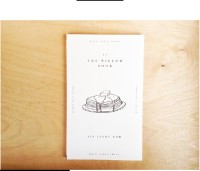
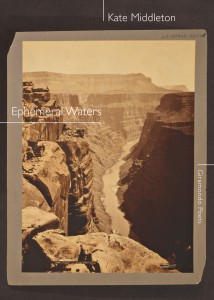

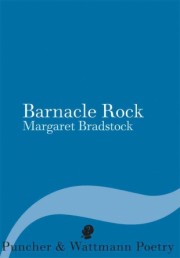 Barnacle Rock
Barnacle Rock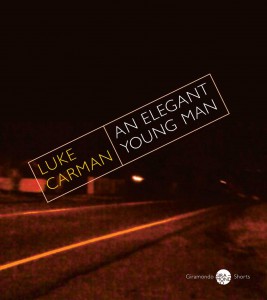
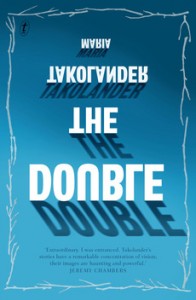

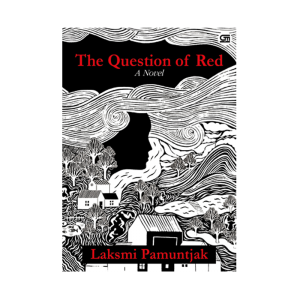 The Question of Red
The Question of Red